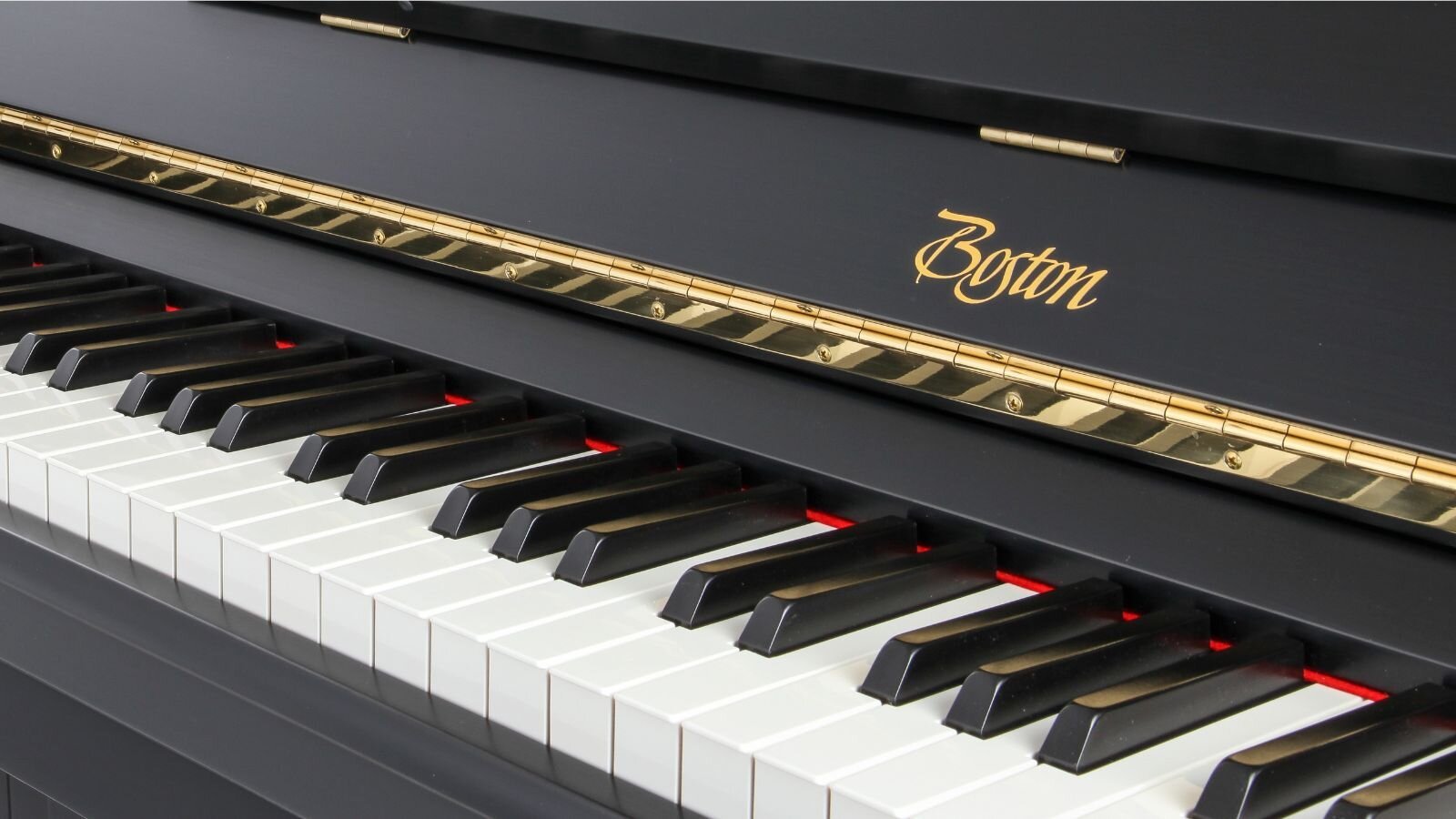The Boston Piano: A Steinway Creation
Steinway & Sons: background
Steinway & Sons have been manufacturing pianos in the U.S. since 1853. Like most businesses that have been around for that long, Steinway has endured numerous ups and downs over the years, changing form and adapting along the way. Unsurprisingly, not everybody can afford a full-sized grand piano. In an effort to access a wider market, Steinway introduced two new brands manufacturing mid-level and entry-level instruments: Boston and Essex pianos.
Boston pianos, first introduced in 1992, are meant to capture the sound and feel of a Steinway grand piano, but in a slightly smaller package and at a substantially lower price point. Boston pianos are marketed as solid mid-level instruments, offering the quality build of a Steinway instrument, but using cheaper materials and manufacturing techniques. It’s similar to how Gibson manufactures cheaper models of their own guitars under the Epiphone brand name, or how DW Drums also designs and produces drums for the PDP brand. But what sets Boston pianos apart from other mid-range pianos?
Inside the Boston Piano
Few manufacturers possess the experience and ingenuity that Steinway exhibits. Containing Steinway’s patented duplex scale design, Boston pianos produce a richness in tone and resonance unmatched by other pianos in the same price range. At 5 feet 10 inches long, the design of Boston grand pianos allows for the same size soundboard used in grands that are 4 inches longer.
Although Boston pianos are designed by Steinway, they are manufactured by Kawai at their Japanese and Indonesian factories. Kawai, a family-owned company based in Japan, was founded in 1927. They have a stellar reputation in the piano realm and are second in size only to Yamaha. Kawai follows Steinway’s design plans exactly, including the use of wooden internal components, despite using carbon fiber components for their own brand’s pianos.
Steinway designed both grand and upright versions of the Boston piano. The strings in a Boston piano rest at a lower tension compared to other pianos, improving clarity of tone and extending the life of the instrument. The soundboard is built from solid Sitka spruce, an extremely resonant wood, giving the piano a warm, long sustain. Cheaper instruments sometimes use much cheaper, lower quality materials, like laminated wood, which don’t carry sound as effectively.
Why Boston Pianos are Great for Student Musicians
Boston pianos are a common site in school music programs and piano lesson and practice rooms all over the world due to their balance of quality and affordability. Institutions seeking to become an ‘All-Steinway School’ will sometimes purchase pianos in bulk, often including dozens of Boston pianos, with orders occasionally exceeding $3 million. To receive the ‘All-Steinway’ designation, 90% of a school’s pianos must be Steinway instruments in performance-ready order. Schools must also have technicians that participate in Steinway’s technical training programs.
It’s likely that students will someday get the chance to play or take piano lessons on a Boston piano. It’s important for students to take piano lessons on quality instruments to ensure the development of proper technique. Having access to a piano that sounds good and is fun to play encourages regular practice, which leads to faster development of ability.
While a quality acoustic piano may not be practical for your living and learning situation, digital pianos are an excellent alternative for those taking piano lessons in Boston. Learn more about the similarities and differences between acoustic vs. digital pianos by checking out our blog.
Boston Piano Lessons Near Me
Would you like to take the next steps in your musical journey? Why not sign up for music classes at Loudlands Music Lab? Our Greater Boston music school offers classes from professional piano instructors who are actively involved in the local music scene. They’ll not only guide you through your musical development, but can also give you tips on how to find the right keyboard or piano for you to practice on at home!


